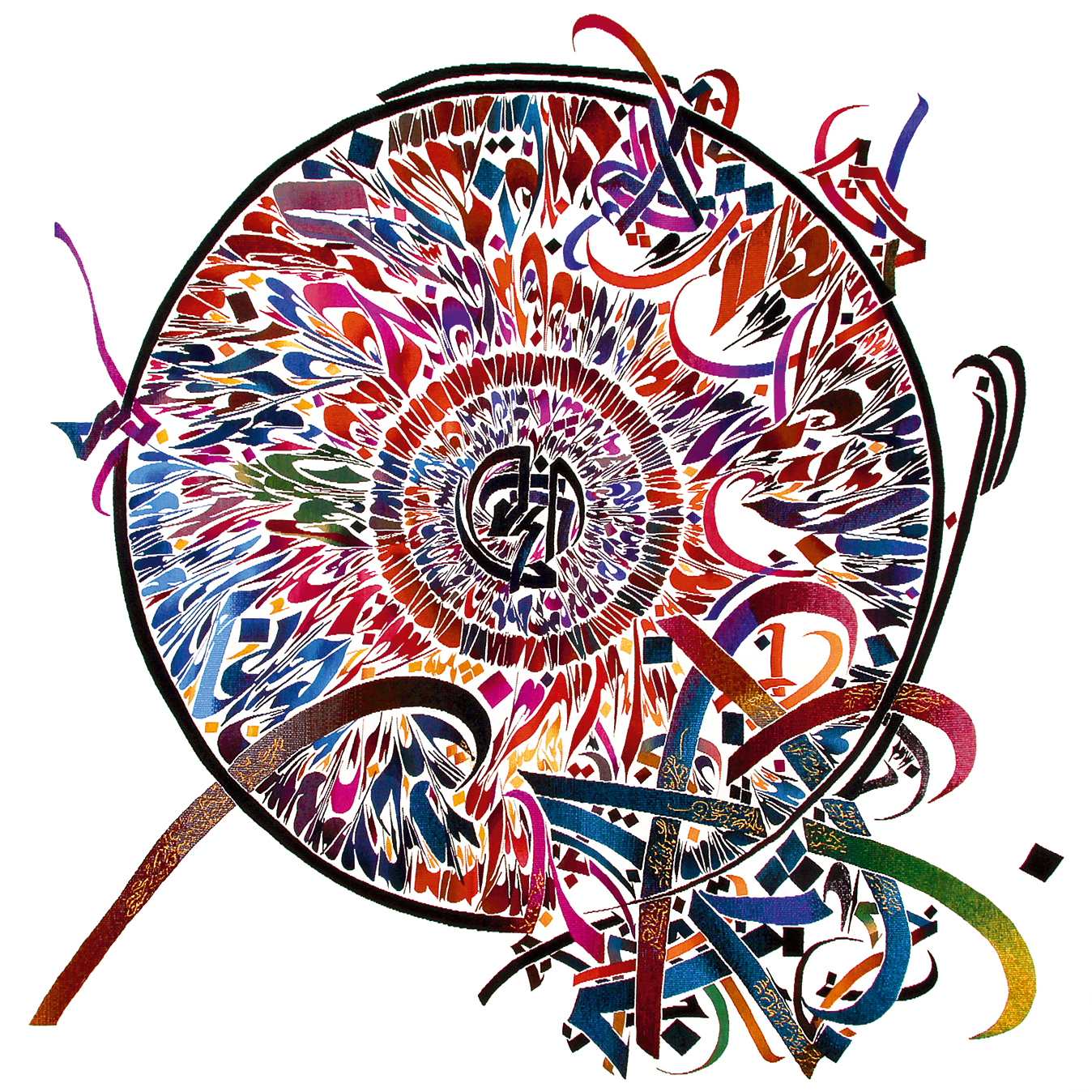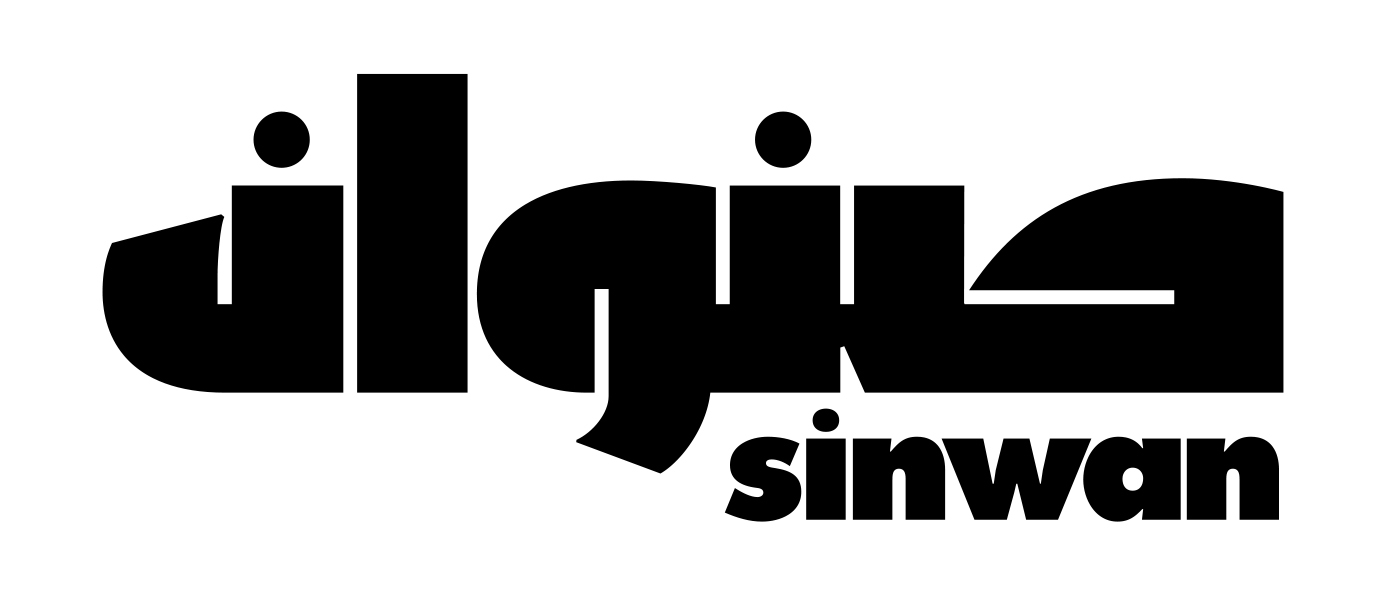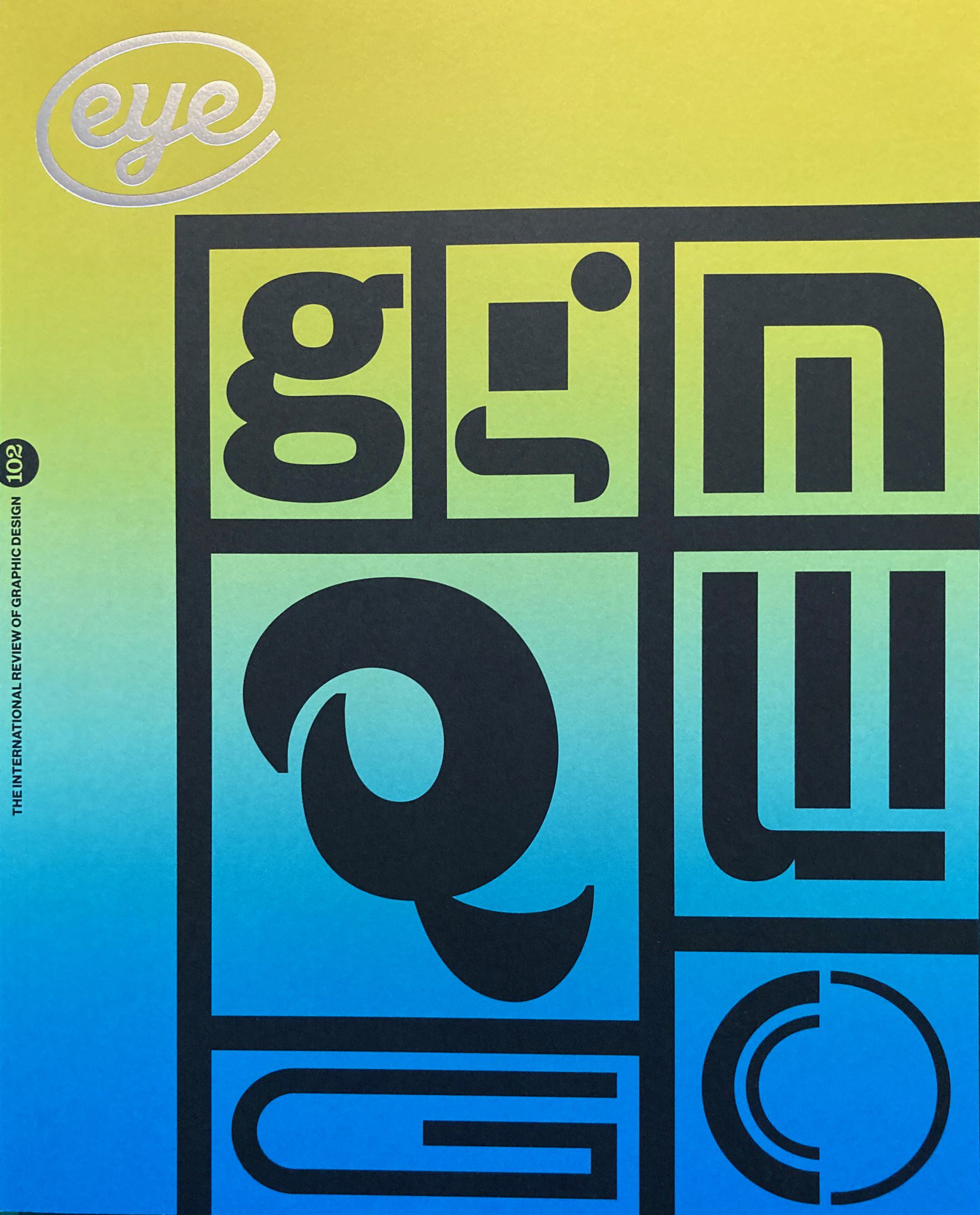Autumn 2021
Typographics 21: Session 7
22 June 2021. Bahia Shehab, host.
Nja Mahdaoui
‘The Choreographer of Letters’Yara Khoury Nammour, American University of Beirut
‘Linking the dots’Kameel Hawa, Al Mohtaraf
‘The Spring of Arabic Typography’
The seventh session was conducted in both Arabic and English, highlighting the nature of duality in Arabic type design. Bahia Shehab, an artist and professor of design, curated and hosted the session seamlessly, weaving a fascinating, cohesive narrative from a diverse range of speakers.
Nja Mahdaoui, a distinguished ‘choreographer of letters’, was first up, presenting an astonishing array of craft. From stained glass windows to tapestries, from aircraft tails to three-dimensional sculptures, this work is proof that letterforms can be used to express artistic sentiment as well as communicate meaning. Mahdaoui said: ‘I abstracted, I removed all the meaning and I left the rhythm of the letter.’ The artist’s instinct for coaxing out the essence of words was evident throughout his conversation with Shehab. Mahdaoui said that explorations of the self should not close people off – identity should be used to liberate ourselves from division, to connect and converse with other cultures. ‘Arabic calligraphy’, he said, ‘belongs to everybody.’
Logo design in Arabic by Yara Khoury Nammour for the Sinwan gift shop, Saudi Arabia 2005. Top. A tapestry by Nja Mahdaoui, which demonstrates the rhythm of Arabic letters, 2012.

Graphic and type designer Yara Khoury Nammour (see her review, ‘A ground-breaking survey’) then took the baton, whizzing through a selection of work that left the audience in awe. Connecting the dots between research and practice, Nammour detailed her journey in encouraging young designers to explore Arabic lettering. After twenty years at Al Mohtaraf, the multidisciplinary design house, Nammour works as an assistant professor at the American University of Beirut and nurtures her independent practice at the same time. A highlight was an account of her research on Nasri Khattar, a Lebanese architect and type designer, which culminated in a bilingual book exploring his life’s work. Published by the Khatt Foundation, a research centre for Arabic typography, the illustrated monograph explores Khattar’s development of 30 Unified Arabic Letters, which made it easier to learn, produce, and typeset Arabic. As Nammour explained this work, her eyes lit up: ‘It was like digging into the archives and weaving a story and contextualising the events with the evidence he left behind – he knew exactly what he left behind.’
Yara Khoury Nammour’s proposal for the custom lettering of a Qur’anic verse for the Ithra Mosque in Saudi Arabia, 2015.

Kameel Hawa, the final speaker and founder of Al Mohtaraf, declared that ‘moving away from the shadow of traditional calligraphy was the step that opened unlimited horizons for variety and creativity.’ Hawa explained his concerns especially with the aesthetic differences between handwritten calligraphy and printed fonts.
A prominent theme throughout the event was the field’s dance between traditional calligraphy, contemporary typography and bilinguality. It is clear that these talks are only a small snapshot of a huge wave of innovation in Arabic type design.
Anoushka Khandwala, designer, writer, educator, London
First published in Eye no. 102 vol. 26, 2021
Eye is the world’s most beautiful and collectable graphic design journal, published for professional designers, students and anyone interested in critical, informed writing about graphic design and visual culture. It is available from all good design bookshops and online at the Eye shop, where you can buy subscriptions and single issues.

